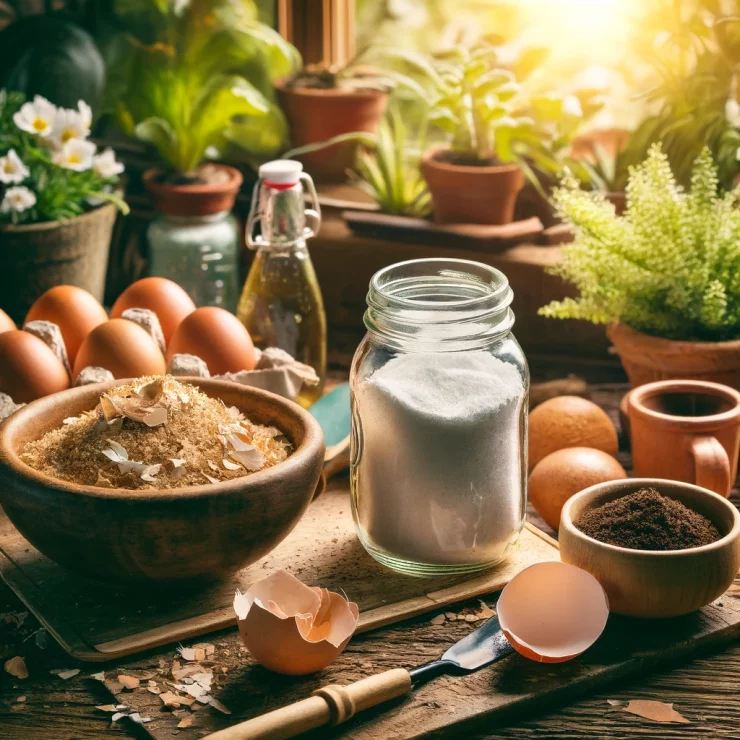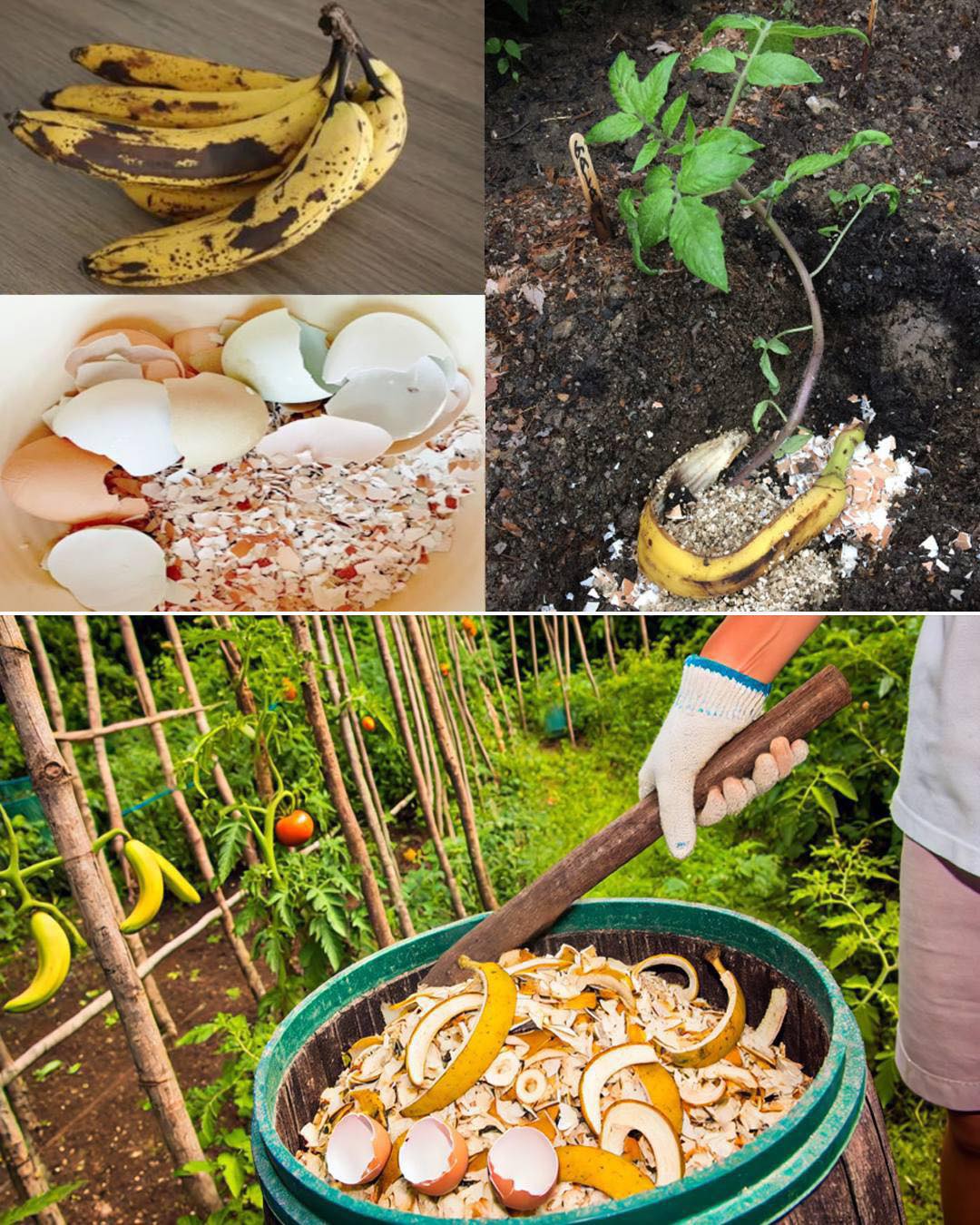Gardening enthusiasts often find themselves seeking alternatives to commercial fertilizers, whether due to budget constraints, environmental concerns, or simply a desire for more natural solutions. Homemade fertilizers, concocted from readily available ingredients, offer a sustainable and eco-friendly way to nourish your plants while reducing reliance on synthetic chemicals. Here, we present the top 10 homemade fertilizer recipes that will help you cultivate thriving gardens without breaking the bank or harming the environment.

Banana Peel Fertilizer
Rich in potassium, banana peels make an excellent fertilizer for flowering plants. Simply chop up the peels and bury them near the base of your plants to provide a slow-release nutrient boost.
Eggshell Tea
Save those eggshells from your breakfast! Rinse them thoroughly, crush them into small pieces, and steep them in water for a few days. The resulting eggshell tea is a calcium-rich fertilizer that strengthens plant cell walls and promotes healthy growth.
Coffee Grounds Compost
Instead of tossing your used coffee grounds, sprinkle them around your acid-loving plants like azaleas, rhododendrons, and blueberries. Coffee grounds enrich the soil with nitrogen, potassium, and phosphorus, while also improving drainage and aeration.
Weed Tea Fertilizer
Rather than discarding weeds, turn them into a nutrient-packed fertilizer. Fill a container with weeds, cover them with water, and let them decompose for a few weeks. Dilute the resulting “weed tea” with water before using it to fertilize your plants.
Fish Emulsion
Fish scraps or fish heads can be repurposed into a potent fertilizer that’s high in nitrogen, phosphorus, and trace minerals. Blend the fish scraps with water, strain the mixture, and dilute it before applying it to your garden beds.
Epsom Salt Solution
Magnesium-deficient plants, such as tomatoes and peppers, benefit from an Epsom salt solution. Dissolve 2 tablespoons of Epsom salt in 1 gallon of water and use it to water your plants once a month to promote healthy foliage and fruit production.
Molasses Magic
Molasses serves as a natural source of carbohydrates and micronutrients that stimulate microbial activity in the soil. Mix 1-2 tablespoons of unsulphured molasses with water and apply it to your plants to improve nutrient uptake and soil structure.
Seaweed Extract
Harvested seaweed is packed with minerals, vitamins, and growth hormones that benefit plants in various ways. Soak dried seaweed in water for a few days to create a nutrient-rich extract that enhances plant resilience and overall health.

Wood Ash Fertilizer
Wood ash from your fireplace or bonfire contains potassium and calcium carbonate, making it a valuable fertilizer for fruit-bearing plants like tomatoes and apples. Sprinkle a thin layer of wood ash around the base of your plants to boost their nutrient intake.
Comfrey Compost
Comfrey leaves are nutrient powerhouses, rich in potassium, phosphorus, and nitrogen. Create a compost pile using comfrey leaves and other organic matter to produce a nutrient-dense fertilizer that accelerates plant growth and improves soil fertility.
By harnessing the power of these natural ingredients, you can nourish your plants, enrich your soil, and cultivate thriving gardens without relying on synthetic fertilizers. Experiment with these homemade fertilizer recipes to discover which ones work best for your specific plants and soil conditions. Not only will you save money and reduce environmental impact, but you’ll also enjoy the satisfaction of nurturing your garden with homemade, eco-friendly solutions.
News
JJ Redick reacts to Luka Doncic trade for Anthony Davis
In one of the most jaw-dropping moves of the season, the NBA landscape was rocked by the blockbuster trade involving Luka Dončić and Anthony Davis—a swap that has sent ripples of excitement, disbelief, and heated discussion through the league. Among…
Anthony Davis FULL reaction to trade to Mavericks for Luka Doncic
In a blockbuster move that sent shockwaves through the NBA and left fans reeling, Anthony Davis has been traded to the Dallas Mavericks in exchange for Luka Dončić. In the immediate aftermath of the news, Davis took to the media…
Shaq reacts to Dallas Mavericks wanting Kevin Durant after Luka-AD trade 👀
In the constantly shifting world of the NBA, trade rumors and blockbuster moves are a regular part of the season’s drama. The latest twist has fans buzzing: the Dallas Mavericks have reportedly set their sights on acquiring Kevin Durant in…
Donovan Mitchell FILTHY poster dunk on Kristaps Porzingis 😳
In a game filled with high-intensity moments and jaw-dropping highlights, one play in particular has left fans and analysts buzzing about Donovan Mitchell’s latest display of athleticism. Early in the contest, with the atmosphere already charged by an evenly matched…
Joel Embiid hits go-ahead bucket vs Mavs then chats with Anthony Davis after game
In one of the most thrilling contests of the season, Joel Embiid delivered a clutch performance against the Dallas Mavericks, punctuating the game with a go-ahead bucket that sent the home crowd into a frenzy. The atmosphere in the arena…
D’Angelo Russell game winner as Nets hit two 3’s in 3 seconds to win vs Rockets 😱
In one of the most electrifying moments in recent NBA history, D’Angelo Russell delivered an unforgettable game-winner that left fans and commentators in complete awe. With the Brooklyn Nets locked in a tense battle against the Houston Rockets, the outcome…
End of content
No more pages to load











